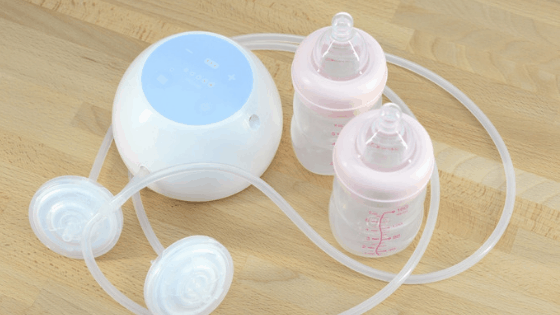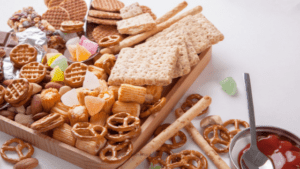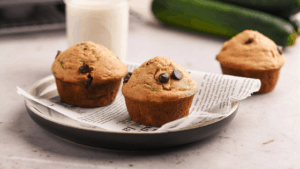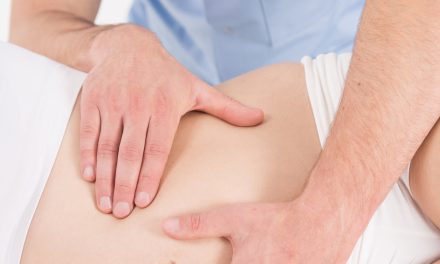The Centers Control and Prevention (CDC) recently published guidelines on how to clean breast pump parts and accessories for pumping. CDC specifically mentions that breast pump parts that have come in contact with the milk such as the breast flange, the valves, and the bottles, should be cleaned with soap and water after EACH and EVERY USE!
This might be shocking for some of you. There is a lot of online recommendation from breastfeeding bloggers that suggest the opposite. I won’t be surprised that you believed it was OK to store the dirty pump parts in a Ziploc cover, toss it in the fridge, use it for multiple pumping sessions and clean it at the end of the day.
Unfortunately, that is NOT what the CDC or the FDA recommends.
Why Did CDC Issue These Guidelines?
While you may not be pleased about these new guidelines, it might be worthwhile to share why CDC issued these guidelines in the first place. If you have been following the news, you might have heard of this tragic story.
** This can be sensitive and I talk about the death of a baby, so Please move on if you are uncomfortable**
CDC shared about the recently reported rather devastating incident of a pre-mature baby contacting the deadly sepsis at 21 days old. The sepsis caused seizures which affected the brain and the infant developed spastic cerebral palsy and a global development delay. Upon further investigation it was found that the baby contracted?Cronobacter sakazakii, a bacteria that can cause rare but fatal infection in the central nervous system.
The baby was given expressed milk from the mother, and the same bacteria was found in the sink ( where the mom washed the pump) and in other pump parts. The mom used to soak the pump parts in the sink for hours, then rinse the pieces (without using soap) and air dry them. Since the pump parts were not cleaned properly, it contaminated the pumped milk that was given to the baby.
How NOT To Clean Breast Pump Parts?
After reading the heartbreaking story, I think we can all agree that cleaning pump parts is not something that should be taken lightly. We would want to prevent the growth of micro-organism in the pump parts.
Soaking the breast pump parts is not recommended as it can quickly become a breeding ground for bacteria. Also, it is not advised to put the pump parts directly in the kitchen sink as there is a risk of cross-contamination resulting in milk going bad.
Cleaning? Sanitizing or Sterilizing?
Cleaning refers to removing any visible dirt, in this case, soiled milk, by running it through the water or washing it with soap. Sanitizing usually refers to a process that reduces the growth of micro-organisms. Sterilization, on the other hand, is complete removal of micro-organisms, this level of deep cleaning is done for surgical instruments and other things that are inserted into the body.
Although sterilizing, cleaning and sanitizing are used loosely when we talk about washing pump parts, it is important to note that, we are not required to sterilize breast pump kit but only clean and sanitize them properly. This post is all about providing instructions on how to clean and sanitize pump parts.
How To Clean Your Breast Pump Kit?
It is highly recommended to wash and clean breast pump parts after each pumping session. Once you are done with your pumping session, carefully put your milk in storage bag or bottle, mark it with the date and time you pumped the milk and store it safely in the fridge or freezer. Then follow the steps to clean your breast pump kit:
Clean Pumping Area:
Once you have stored the milk safely, wipe down the machine dials, the power switch and the table where the breast was kept with disinfectant wipes.
Dismantle the Pump:
Assuming that you have read the manual, dismantle the pump parts as per the instructions specified in the manual. Different brand pumps might have somewhat different parts and may even have recommended methods of cleaning. If you have not read the manual, I highly recommend you do so. You don’t want to go against any of the suggested practices and void your warranty.
Rinse parts:
Any pump part that comes in touch with your milk or breasts must be rinsed thoroughly. I run the parts like the valves, breast shield and the bottles under the tap in the sink. I use warm water to rinse the parts because warm water would easily remove the fat residue from the sides of the bottle.
Wash with Soap:
After rinsing, you can wash the parts with some soap, make sure to get to every nook and corner. You can use any of the three methods listed below to clean pump parts.
Hand Washing :
Keep a box or bowl where you can keep all the rinsed pump parts. Add some water and soap to the bowl, clean all the parts using your hands or a bottle brush. I used a bottle brush because I couldn’t get my hands to clean the corners thoroughly.I used this?silicone bottle brush and worked great for my Ameda and Evenflow pump.
There are some reviews about this brush that says that it doesn’t clean milk residue properly, I never had this issue because I always rinsed by pump parts under running warm water that took care of rinsing out the leftover milk. If silicone doesn’t sound right for you, then this one is also great.
Please keep in mind that it is NOT hygienic to put the pump directly in the sink or wash them in the kitchen sink. I used two separate silver mixing bowls like these ones, one to use for washing used pump parts and another to store dry parts. I also washed the bowl and set it to dry, kept it aside for the next use.
Dishwasher :
Alternatively, if you can wash your breast pump parts in the dishwasher ( if the brand recommends it). Make sure to put all smaller pump parts especially the valves, bottle lid etc., in a basket like this one?to save you some precious time not hunting down lost pump parts.
Rinse and Dry:
If you are hand washing in the basket, rinse the parts again to remove soap, give the parts a good shake (to remove excess water)
and dry them in a clean place. I loved using a bottle drying rack, this one specifically, and it was easy to mount all the parts to air dry completely. If you don’t want a drying rack ( although I highly recommend if you are bottle feeding more often), then use a clean paper towel. If you do use a paper towel or dishcloth, make sure the bottles are titled so that they get air flow inside. If you keep them with their mouth facing down, then there are chances they still have some moisture trapped inside.
CDC advises not to pat dry with a towel because it can reassemble bacteria.
Once the parts are fully dry, you can store in a bag or in a big closed container ( I used this) and you are good to go. When you are ready for the next pump sessions, start with washing your hands, get the pump parts out and start pumping.
How To Sanitize Your Breast Pump Kit?
Cleaning your breast pump parts is often enough for everyday use. However, you would want to sanitize pump parts now and then. CDC recommends sanitizing pump parts ONCE a day for younger babies (less than three-month-old), premature babies or babies who need this extra step like those who have weakened immune system or under medical treatment.
For older babies though, you don’t have to sanitize regularly provided you are cleaning them using the guidelines above. I used to disinfect every week or twice a month. Keep in mind to start with a clean pump, pump parts, and bottles when preparing for sanitizing.
You can use one of the ways to sanitize your breast pump kit:
- Boiling: Put all the pump parts in a pan, fill it with water and put it on the stove top. Bring to boil for 5 minutes, turn the heat off and remove the pump parts.
- Steaming : There are a lot of steam sterilizers and build in drying machine you can buy to save time and energy. If you are pumping and bottle-feeding often, then this can be a solid product that will make sure that the parts are being cleaned and sanitized properly.
- Microwave :??If you are not sanitizing regularly (which you don’t have to if you have an older baby) you can get a more compact sterilizer like the microwave sanitizers. I love this one from nanobebe as it is non-toxic, bpa free and free of phthalates. Alternatively, there are steam bags, like this one from Medela?that are also used in microwave.
I already mentioned this but I want to stress it again, sanitation is done after cleaning the breast pump properly. You don’t want to skip washing pump parts just because you are sanitizing it.
After sanitizing the pump parts you would typically follow the same steps above to dry and store the parts. Dry the parts in a drying rack or a dish towel and store them in a closed container once they are thoroughly dry.
How To Clean Pump Parts at Work or While Travelling?
Washing pump parts after each use get complicated when you are pumping at work or while traveling. I know some offices have a small kitchen space with a sink or even a microwave. You have dedicated basin, soap, brush and a drying rack to wash and dry in your office cubicle.
There are so many workplaces where washing the breast pump is impossible. The safest way to pump is to have enough spare parts so that you can use a clean one for each pumping session, pack the dirty ones in a bag and wash them once you get home.
Otherwise, you can use these disinfectant wipes to clean them quickly, toss it in the bag and wash it later.
Some Common FAQ’s:
I know I shared a lot of information above. Some of you might be even worried a bit above following along these instructions. I want to just quickly go over some of the main questions moms have about washing pump parts and make it a bit more clear for you.
How Often Should I Wash Breast Pump Parts?
Breast pumps must be cleaned after each use. That’s right. Each and every part that comes in touch with your breasts or milk should be cleaned and dried thoroughly before using it again.(source)
How Often Should I Sanitize Breast Pump Parts?
CDC recommends that you sanitize breast pump afters ( after washing them) once a day for babies less than 3 months old, pre-mature babies, babies that have weakened immune system or under medical treatment. For older babies, sanitizing is not required that often. I used to sanitize once or twice a month.
Should I Clean the Pump after every use?
Yes! That is what the new guidelines from?Centers Control and Prevention (CDC) recommend. There are chances for bacterial growth when breast pump parts are not cleaned properly before the next use. This can sometimes lead to severe fatal infections, especially in younger babies. When it is not possible to wash pump parts, it is suggested to have enough spare pump parts on hand to use.
Let’s Wrap Up:
The new guidelines can be quite shocking for many pumping moms out there.?This might not be a big deal for occasional pumping mothers, but what about moms who are pumping 8 to 10 times a day? It can be a very tough job to take care of the never-ending needs of the newborn, pump for the baby and stand next to sink to clean the parts EVERY SINGLE TIME.
I do understand that concerns that CDC raised and appreciate the new guidelines because I believe we all want to do only the best for our babies even if it means more work for us (Why else would we be hooked to our pump?)
At the same time, I think there should be more initiatives to acknowledge the struggles of pumping and breastfeeding mothers. There should be more supportive measures that encourage breastfeeding like increased maternity leave, grants to get spare pump parts, policies to create a private pumping place at work, etc.,
We just cannot place more responsibilities over mothers and leave them stranded without any support. If we do, they might end giving up on breastfeeding/pumping.
I do think that cleaning the pump parts properly is a hygienic practice to include in your pumping routine. What do you think?
How do you currently clean? And will you make any changes? Do leave a comment and let’s chat on what you think about the new guidelines.
You might also be interested in:
How To Thaw and Warm Up Breast Milk Safely (Plus 6 Practical Tips)
How To Tell If Your Breast Milk Has Gone Bad ( 3 Important Signs!)
If you’d like to save this post to read later, pin this image below:













